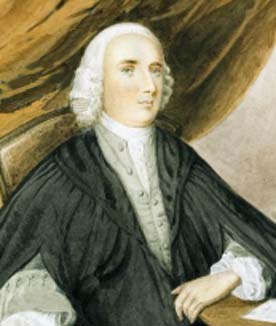By Don Hoyle
“A man and his dad put a bomb in the sink”
Abstract: This article outlines some of the work of Matthew Stewart who was born 300 years ago. In particular, Stewart’s theorem, for which the title is a mnemonic.

Early in 2017, on January 15th, it was the 300th anniversary of the birth of Matthew Stewart. You might not have heard of this Scottish mathematician hence this article. He was born on the Isle of Bute and at the age of 17 went to work under the mathematician Robert Simson at the University of Glasgow.
on January 15th, it was the 300th anniversary of the birth of Matthew Stewart. You might not have heard of this Scottish mathematician hence this article. He was born on the Isle of Bute and at the age of 17 went to work under the mathematician Robert Simson at the University of Glasgow.
Simson was a geometer and the ‘Simson Line’ is named after him. He also showed how the ratio of adjacent terms of the Fibonacci sequence tended to the golden ratio. He was also fascinated by Euclid’s lost books: “The Porisms”. The meaning of this word is vague and has been lost over time. Pappus, who wrote about these books of Euclid, described a ‘porism’ as something between a problem and a theorem. It isn’t a statement of truth, like a theorem, nor a construction and even the mode of reasoning involved has been lost. Stewart went on to study under Colin Maclaurin (as in the series) and, aged 30, succeeded him at the University of Edinburgh as Chair of Mathematics. Stewart’s interest in geometry enabled him to prove Kepler’s second law of planetary motion (‘The line joining the Sun to a planet sweeps out equal areas in equal times’). Kepler had formulated this and the other two laws from astronomical data in 1609. He didn’t know why they were true or how they related to one another. One of Isaac Newton’s motivations in publishing his great work the Principia in 1687 was to show how Kepler’s laws were derived from the inverse square law of gravitational attraction. Stewart proved the second law geometrically. The proof is hard to follow as it uses no diagrams¹! One result that can be followed is Stewart’s theorem². In the diagram, let a, b and c be the lengths of the sides of a triangle. Let d be the length of a line from a vertex to the opposite side a (called a ‘cevian’). If the cevian divides a into segments m and n, with m adjacent to c and n adjacent to b, the Stewart’s theorem states that:
b² m + c²n = a(d² + mn).
This can be rearranged as man+dad=bmb+cnc, for which there is the mnemonic used as the title for this article).
This theorem can be proved using the cosine rule:
c² = m² + d² – 2dmcosθ
b² = n² + d² – 2dncosθ’ as θ and θ’ are supplementary cosθ’= – cosθ
b² = n² + d² + 2dncosθ
Multiplying the first equation by n and the second by m and add to eliminate cosθ
b²m + c²n = nm² + n²m + (m+n)d²
= (m + n)(mn + d²)
= a (mn + d²) as a = m + n
Diagram of Stewart’s theorem
Not all of Stewart’s work was successful. In 1763 he used Newton’s Theories to calculate the distance to the Sun from Earth and was out by over 25%.
¹ In the second volume of “Essays of the Philosophical Society of Edinburgh” available to download from google books
² By Krishnavedala – Own work, CC0, https://commons.wikimedia.org/w/index.php?curid=18036511
This can be rearranged as man+dad=bmb+cnc, for which there is the mnemonic used as the title for this article).
Collins publishes a range of key Maths resources across Key Stage 3, GCSE, and A-level. Find out more.




